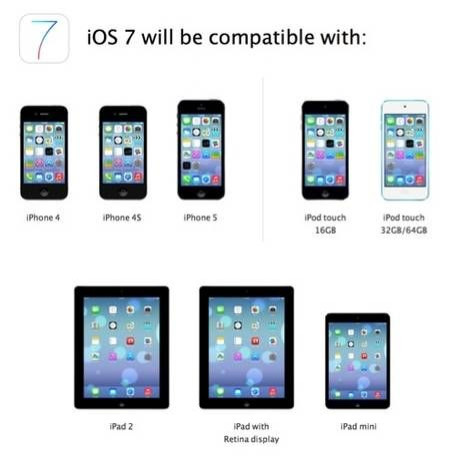
iOS 7 is coming today! Sept. 18 is a momentous day for Apple users, as the tech-giant promises that the new operating system will be the "world's most advanced mobile operating system." And with loyal Apple fans dying to get their hands and iPhones on the new software, one must remember to take care of your precious device before updating to Apple's massively overhauled operating system. While no issues are expected with iOS 7, it never hurts to be precautionary especially if you are working with earlier devoices, i.e. iPhone 4 and iPhone 4S.
Before updating to iOS 7 via Apple's air download, it's best to secure the safety of your device and all of its information by performing a full back up. The percentage of error in within Apple's latest mobile operating system is slim to none due to the extensive beta testing, but we will take you through a step-by-step guide for back up, because you're better safe than sorry!
First things first, your iPhone can be backed up in one of two places, on the newly redesigned iCloud or on your iTunes computer program. If you plan on backing up to iCloud there are four very simple steps. 1) Make sure your iPhone is connected to a secure Wi-Fi network. 2) Click Settings Application, then scroll down to the 4th cluster and tap the iCloud bar. 3) Scroll to the bottom of the screen and click the bar that reads Storage & Backup. 4) Again, after quickly scrolling to the bottom of your iPhone screen click Back Up Now. Once you have completed these four steps a status bar will appear under the Back Up Now bar which will estimate the time until your back up is completed. On average, a backup will take approximately a minute.
If you would prefer to back up your iPhone via iTunes, the process is just as easy. 1) Connect your iPhone to your computer via Apple's USB sync cable, the same cable that charges your device. 2) After connecting your iPhone to your computer, iTunes will automatically launch and start the sync process. Normally a sync will also initiate a backup, however, if your iPhone isn't auto-set to sync, continue to Step 3. 3) Click the Summary button for your iPhone. Then, in the Backups section, click the Back Up Now button.
Easy as one-two-three and four for iCloud, but now you and your device are ready for the installation of iOS 7. If for any reason Apple's new mobile operating system does not work properly with your device, you will be able to restore your iPhone to its pervious functioning iOS 6.
RELATED:
iCloud's iOS 7 Redesign: Apple Gives iCloud Website A Makeover With New App Interface
iOS 7 Release Date: What To Expect From Apple's New Operating System [VIDEO]
popSLATE iPhone 5S Case: Extra Always-On Screen Is An E-Reader That Also Extends Battery Life
© 2025 Latin Times. All rights reserved. Do not reproduce without permission.





